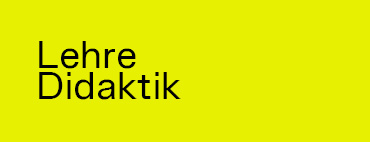Welcome at the Interface Culture program website.
Acting as creative artists and researchers, students learn how to advance the state of the art of current interface technologies and applications. Through interdisciplinary research and team work, they also develop new aspects of interface design including its cultural and social applications. The themes elaborated under the Master's programme in relation to interactive technologies include Interactive Environments, Interactive Art, Ubiquitous Computing, game design, VR and MR environments, Sound Art, Media Art, Web-Art, Software Art, HCI research and interaction design.

The Interface Culture program at the Linz University of Arts Department of Media was founded in 2004 by Christa Sommerer and Laurent Mignonneau. The program teaches students of human-machine interaction to develop innovative interfaces that harness new interface technologies at the confluence of art, research, application and design, and to investigate the cultural and social possibilities of implementing them.
The term "interface" is omnipresent nowadays. Basically, it describes an intersection or linkage between different computer systems that makes use of hardware components and software programs to enable the exchange and transmission of digital information via communications protocols.
However, an interface also describes the hook-up between human and machine, whereby the human qua user undertakes interaction as a means of operating and influencing the software and hardware components of a digital system. An interface thus enables human beings to communicate with digital technologies as well as to generate, receive and exchange data. Examples of interfaces in very widespread use are the mouse-keyboard interface and graphical user interfaces (i.e. desktop metaphors). In recent years, though, we have witnessed rapid developments in the direction of more intuitive and more seamless interface designs; the fields of research that have emerged include ubiquitous computing, intelligent environments, tangible user interfaces, auditory interfaces, VR-based and MR-based interaction, multi-modal interaction (camera-based interaction, voice-driven interaction, gesture-based interaction), robotic interfaces, natural interfaces and artistic and metaphoric interfaces.
Artists in the field of interactive art have been conducting research on human-machine interaction for a number of years now. By means of artistic, intuitive, conceptual, social and critical forms of interaction design, they have shown how digital processes can become essential elements of the artistic process.
Ars Electronica and in particular the Prix Ars Electronica's Interactive Art category launched in 1991 has had a powerful impact on this dialog and played an active role in promoting ongoing development in this field of research.
The Interface Cultures program is based upon this know-how. It is an artistic-scientific course of study to give budding media artists and media theoreticians solid training in creative and innovative interface design. Artistic design in these areas includes interactive art, netart, software art, robotic art, soundart, noiseart, games & storytelling and mobile art, as well as new hybrid fields like genetic art, bioart, spaceart and nanoart.
It is precisely this combination of technical know-how, interdisciplinary research and a creative artistic-scientific approach to a task that makes it possible to develop new, creative interfaces that engender progressive and innovative artistic-creative applications for media art, media design, media research and communication.
Wie lehren wir?
8. Jänner 2026, 15. Jänner 2026, 29. Jänner 2026
Inhalt
„Wie lehren wir?“ stellt die Frage nach den Strukturen der Lehre an der Kunstuniversität Linz und wie die Lehrenden zu einem professionellen und inspirierenden Lehr- und Lernumfeld beitragen können. Konkret setzt sich die Workshop-Reihe zum Ziel, Teilnehmer*innen bei der individuellen Entwicklung ihrer Lehre durch Fortbildung und Vernetzung zu unterstützen. Die drei Workshops bieten dabei die Möglichkeit, didaktischen Wissenserwerb und kollegialen Austausch kontinuierlich und nachhaltig miteinander zu verbinden.
Während beim Workshop 1 „Start in die Lehre" institutionelle Strukturen und persönliche Haltungen zur Lehre geklärt werden, steht beim Workshop 2 „Von der Idee zum Lehrkonzept" die konkrete Entwicklung einer Lehrveranstaltung im Fokus. Der Workshop 3 „Produktives Feedback und faire Beurteilung" erörtert, wie Arbeitsprozesse durch stimmige Rückmeldungen gut begleitet und Studierendenleistungen gerecht beurteilt werden können.
Jeder Workshop-Termin besteht aus grundlegendem inhaltlichen Input, einem Praxisbeispiel und Ko-Kreation in der Peergroup, die für die aktiv-reflexive Entwicklung einer Lehrphilosophie, eines Lehrveranstaltungskonzepts und eines Feedbackformats genutzt werden. Die gemeinsame Zeit vor Ort soll fokussiert für praktische Arbeit und regen Austausch verwendet werden, um mit konkreten Bausteinen und gedanklichen Impulsen das eigene Lehrprofil weiter zu schärfen.
Workshoptermine
- Donnerstag, 8. Jänner 2026, 14.00 bis 17.30 Uhr
- Donnerstag, 15. Jänner 2026, 14.00 bis 17:30 Uhr
- Donnerstag, 29. Jänner 2026, 14:00 bis 17:30 Uhr
Ort
Hauptplatz 6, 4020 Linz Hörsaal C, Rep. West im 5. Stock
Trainerin
Dr.in Luise Reitstätter ist Kulturwissenschaftlerin mit Fokus auf visueller und materieller Kulturanalyse, Museologie und Ausstellungstheorie sowie Methoden qualitativer Sozialforschung. In ihre Fortbildungsformate bringen sie Erfahrungen aus ihrer diversen Lehrpraxis an den Universitäten Wien, Salzburg, Graz und Innsbruck sowie an der Universität für angewandte Kunst Wien ein.
Anmeldung und Teilnahme
Anmeldung unter: weiterbildung.office@kunstuni-linz.at
Die Anmeldung erfolgt für alle drei Module (eine Einzelbuchung ist nicht möglich). Wir bitten bei Verhinderung um zeitgerechte Abmeldung.
